Contents
DNN SAML Single Sign-On (SSO) with ADFS As IDP
DNN SAML Single Sign-On (SSO) authentication provider gives the ability to enable SAML Single Sign-On for your DotNetNuke applications. Using Single Sign-On you can use only one password to access your DotNetNuke application and services. Our authentication provider is compatible with all the SAML-compliant identity providers. Here we will go through a step-by-step guide to configure Single Sign-On (SSO) between DotNetNuke and ADFS considering ADFS as IdP.
Download and Install the authentication provider in DotNetNuke
- Download the package for DNN SAML Single Sign-On (SSO) authnetication provider.
- Upload the installation package dnn-saml-single-sign-on_xxx_Install by going in Settings > Extension > Install Extension.
Steps to configure ADFS Single Sign-On (SSO) Login into DotNetNuke
1. Add authentication provider on DNN page
- Now under the Installed extensions tab select Authentication Systems.Here you can see the miniOrange DNN SAML Authentication Plugin.
- Just Click on the pencil icon as mentioned in the image below to configure the DNN SAML Authentication Provider.
- You have finished with the Installation of the authentication provider on your DNN site.
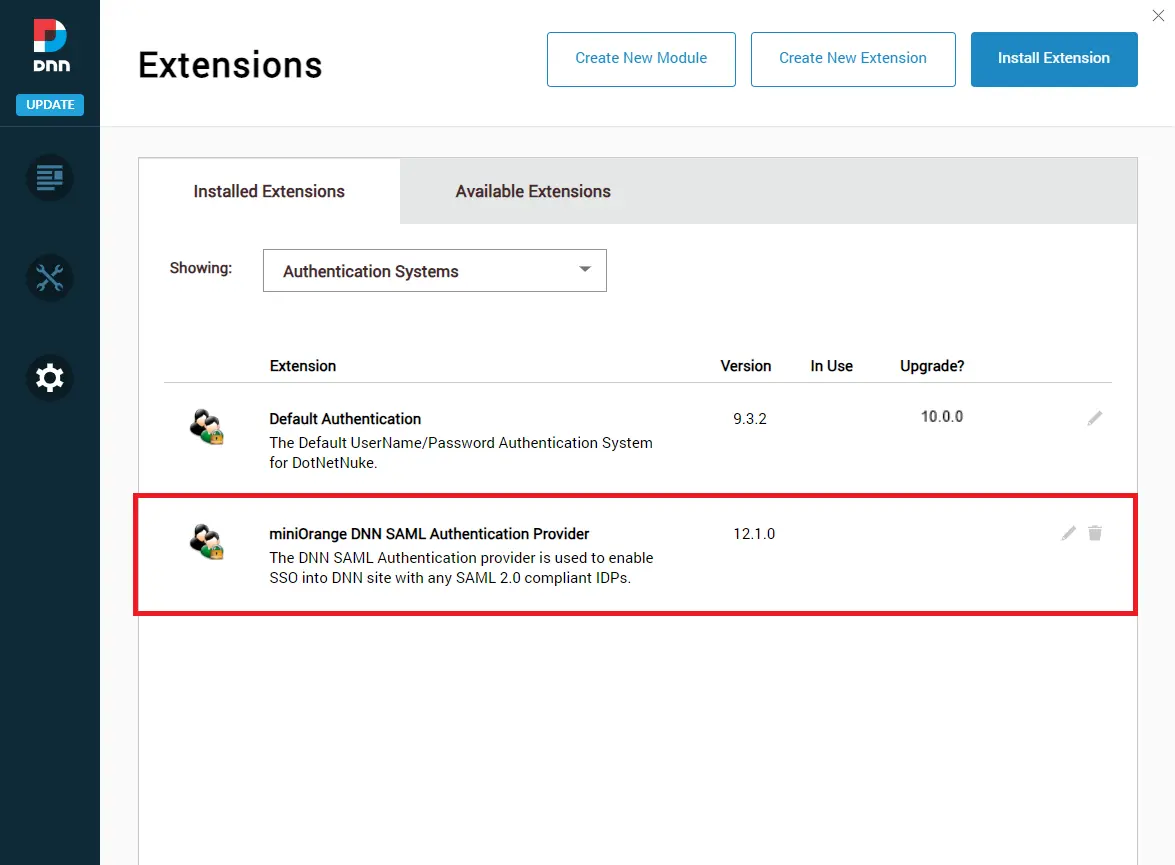
2. Configure ADFS as Identity Provider
- First, search for ADFS Management application on your ADFS server.
- In AD FS Management, select Relying Party Trust and click on Add Relying Party Trust.
- Select Claims aware from the Relying Party Trust Wizard and click on Start button.
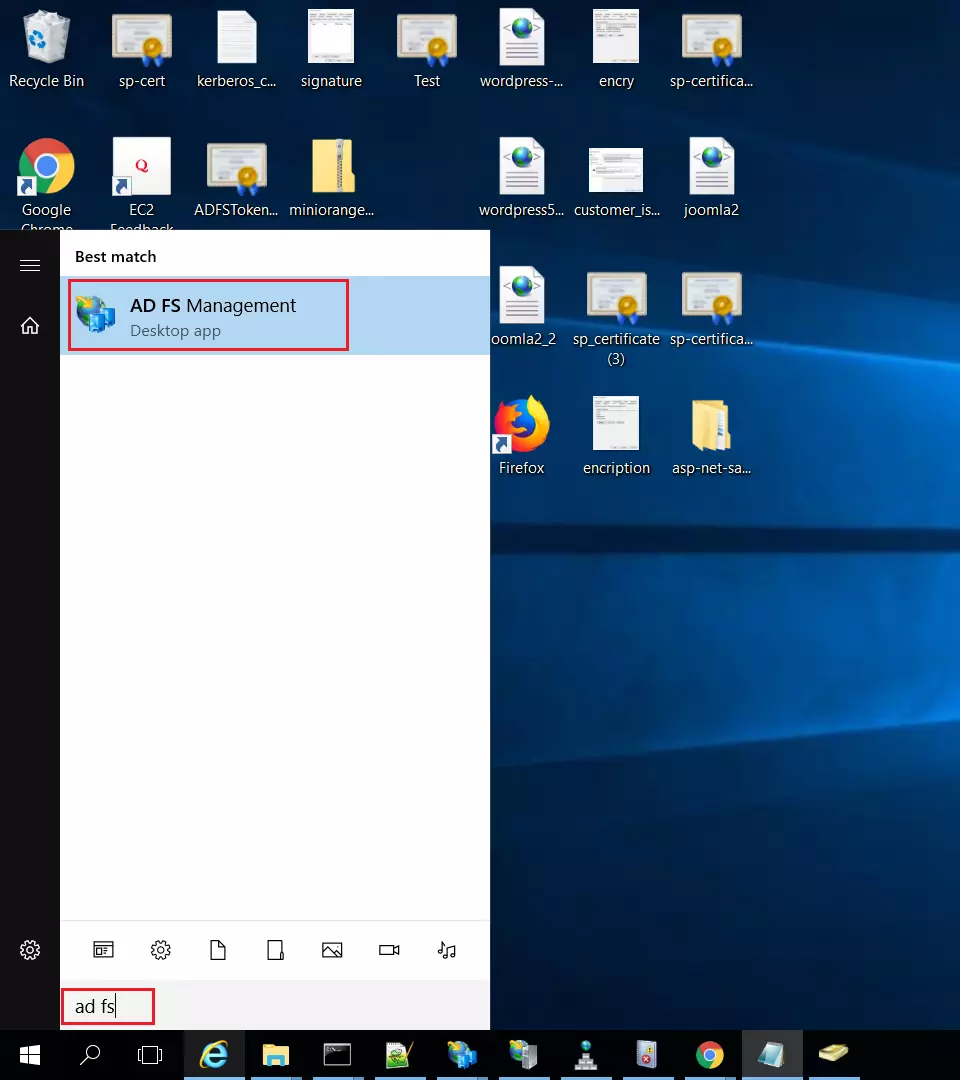

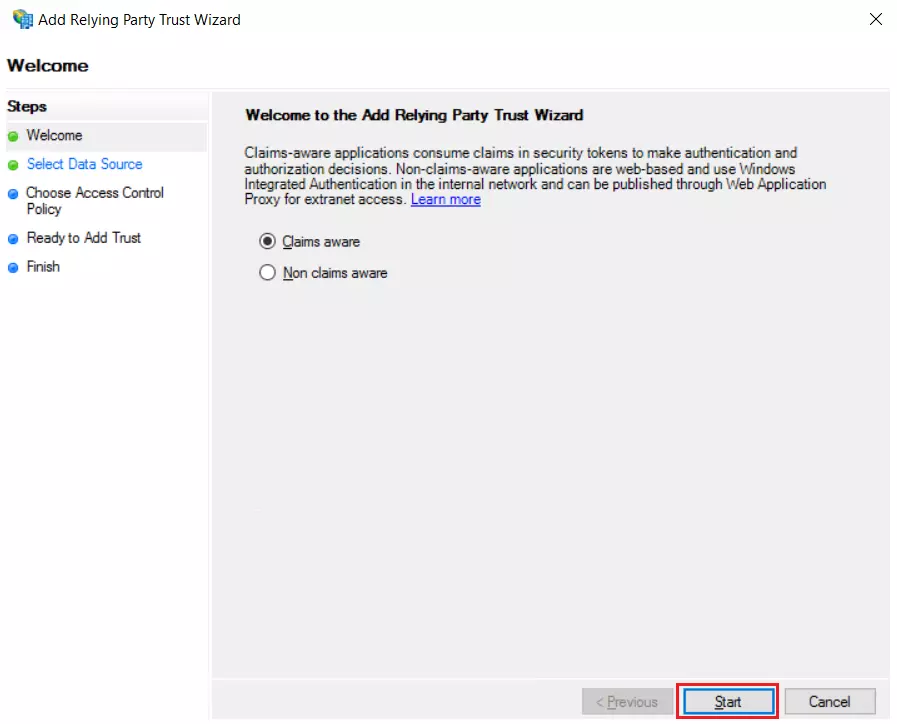
 Select Data Source
Select Data Source
- In Select Data Source, select the data source for adding a relying party trust.
- Navigate to Service Provider Metadata section from the ASP.NET SAML module and copy the Metadata URL.
- Select Import data about the relying party published online or on the local network option and add the metadata URL in Federation metadata address.
- Click on Next.
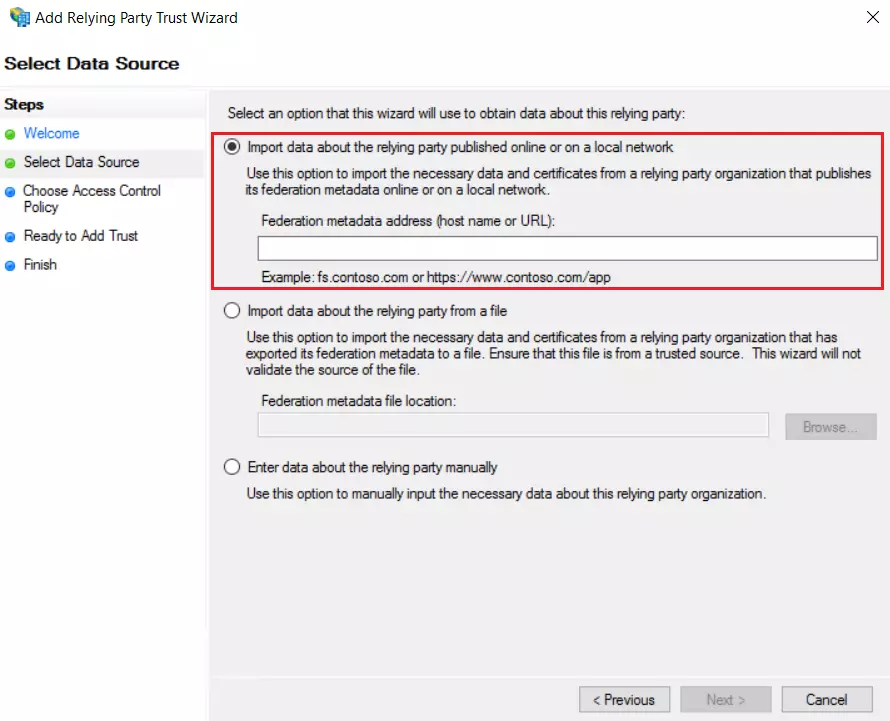
Note: In the next step enter the desired Display Name and click Next.
- Navigate to Service Provider Metadata section from the ASP.NET SAML module and click on the Download XML metadata button to download the plugin metadata file.
- Select Import data about the relying party from a file option and upload the downloaded metadata file.
- Click on Next.

Note: In the next step enter the desired Display Name and click Next.
- Navigate to Service Provider Metadata section of the ASP.NET SAML module to get the endpoints to configure Service Provider manually.
- In Add Relying Party Trust Wizard select option Enter data about the relying party manually and click on Next.
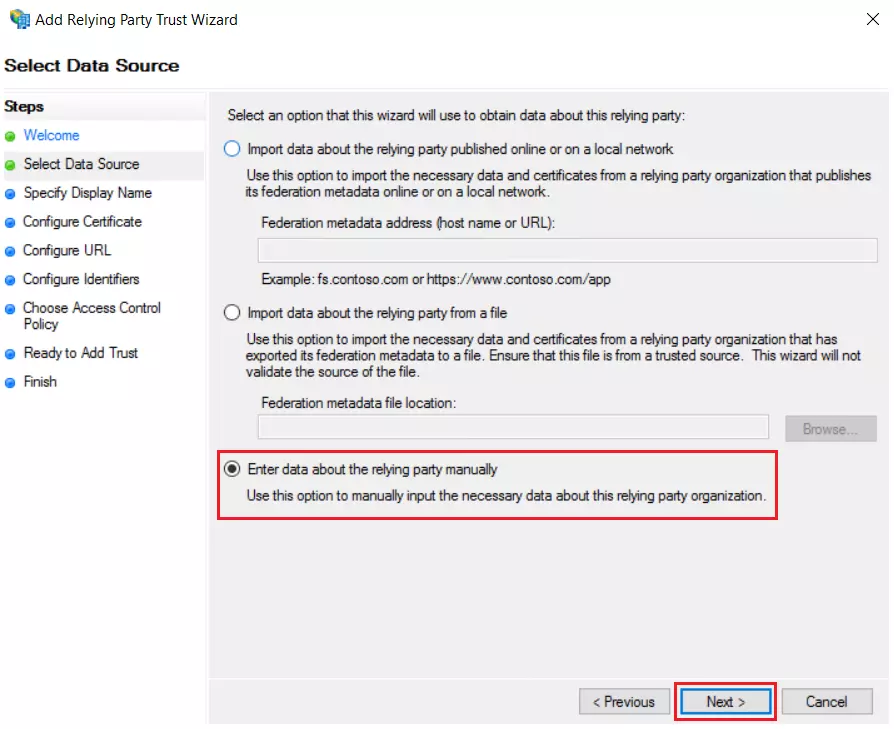
 Specify Display Name
Specify Display Name
- Enter Display Name and Click Next.
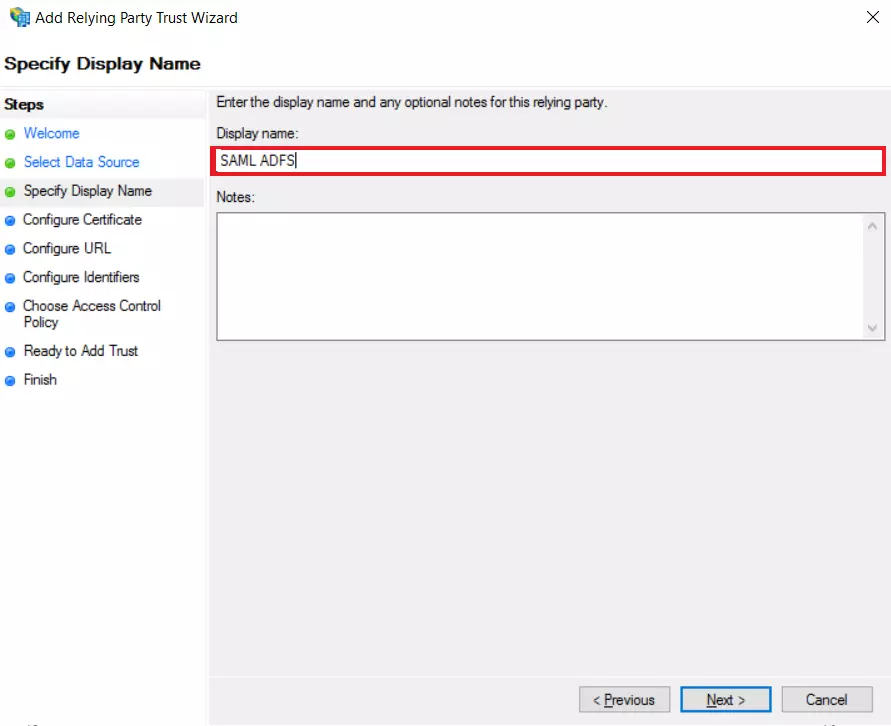
 Configure Certificate (Premium feature)
Configure Certificate (Premium feature)
- Download the certificate from Service Provider Metadata Tab.
- Upload the certificate and click on Next.
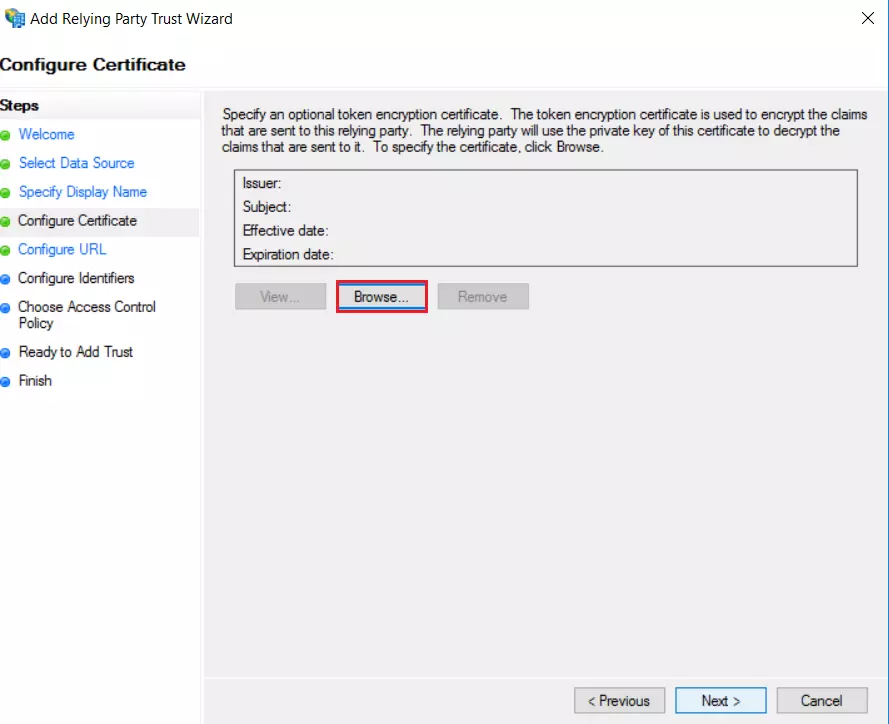
 Configure URL
Configure URL
- Select Enable support for the SAML 2.0 WebSSO protocol option and enter ACS URLfrom the plugin's Service Provider Metadata Tab.
- Click on Next.
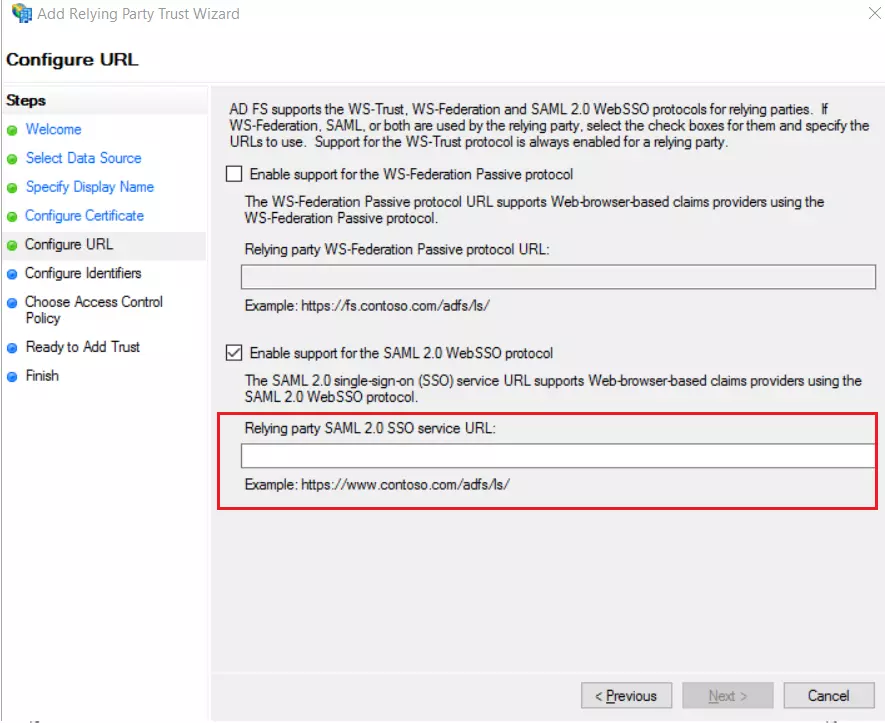
 Configure Identifiers
Configure Identifiers
- In the Relying party trust identifier, add the SP-EntityID / Issuer from the plugin's Service Provider Metadata tab.
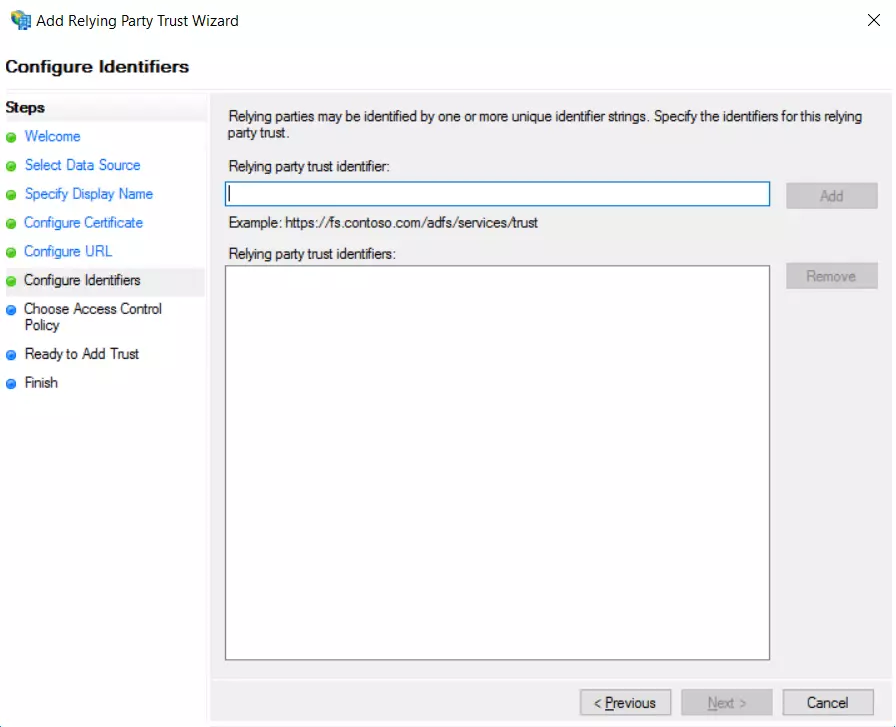
 Choose Access Control Policy
Choose Access Control Policy
- Select Permit everyone as an Access Control Policy and click on Next.
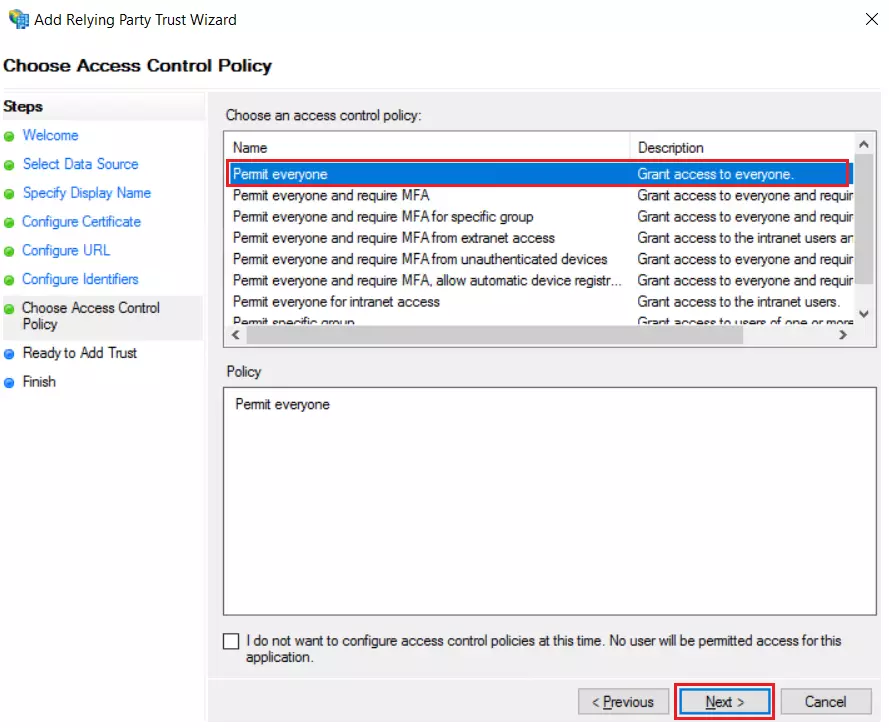
 Ready to Add Trust
Ready to Add Trust
- In Ready to Add Trust click on Next and then Close.
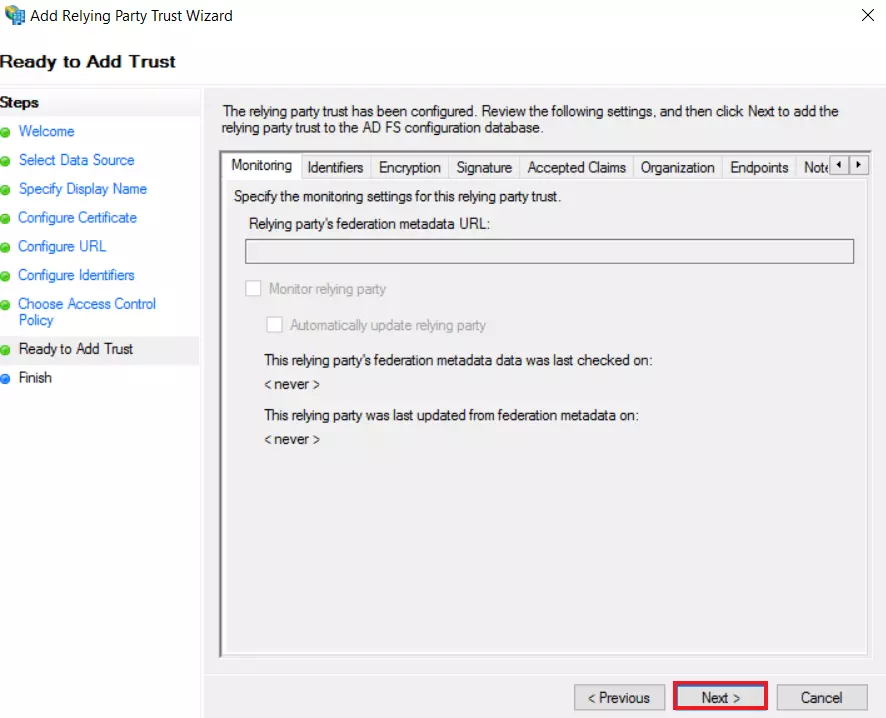
 Edit Claim Issuance Policy
Edit Claim Issuance Policy
- In the list of Relying Party Trust, select the application you created and click on Edit Claim Issuance Policy.
- In Issuance Transform Rule tab click on Add Rule button.
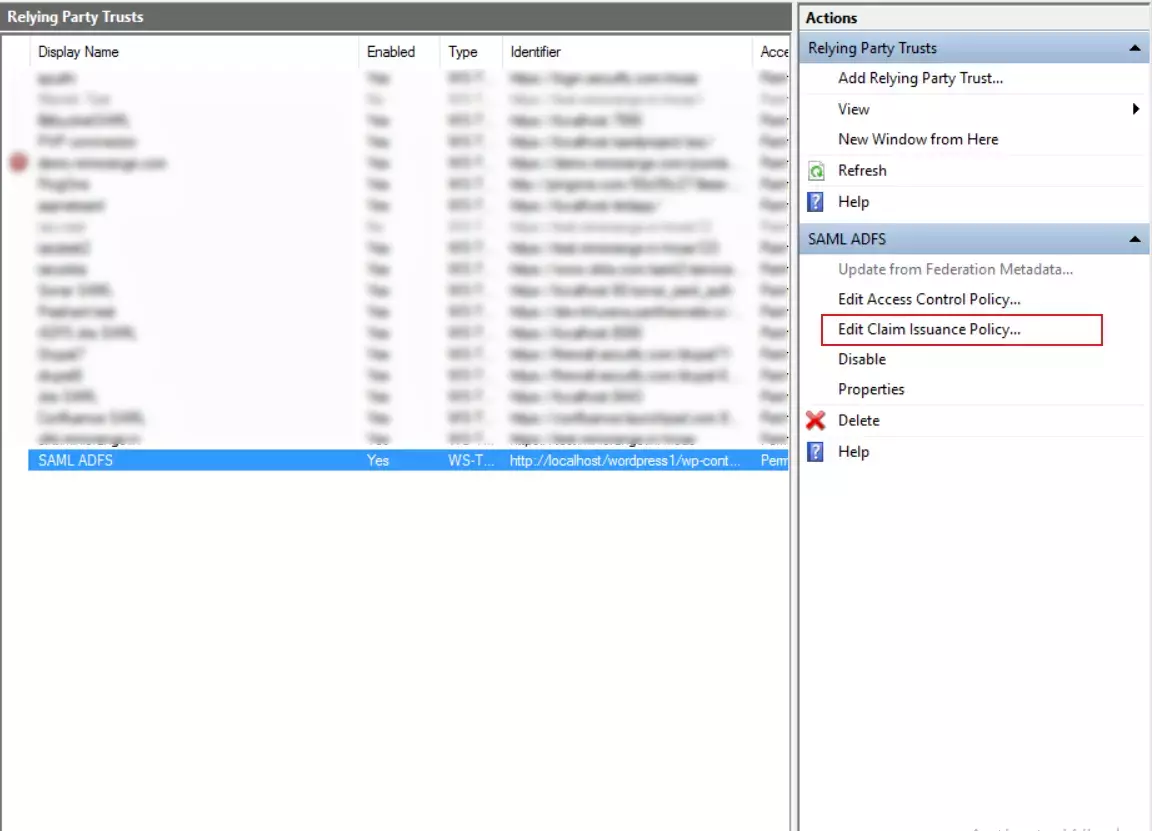
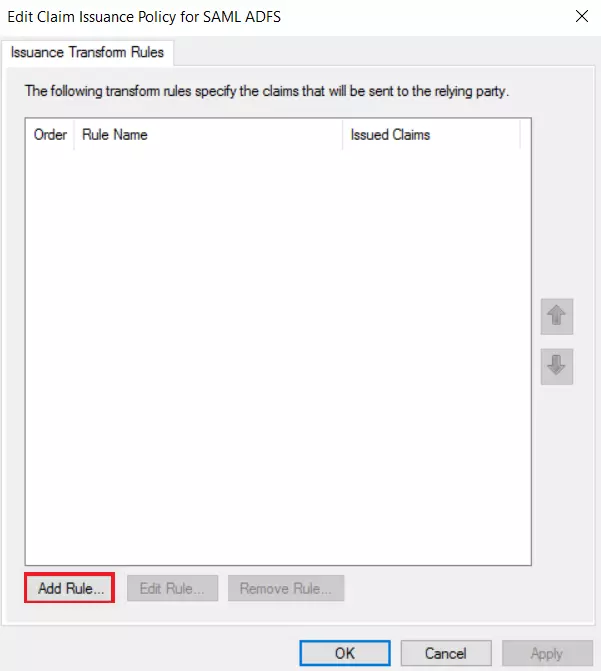
 Choose Rule Type
Choose Rule Type
- Select Send LDAP Attributes as Claims and click on Next.
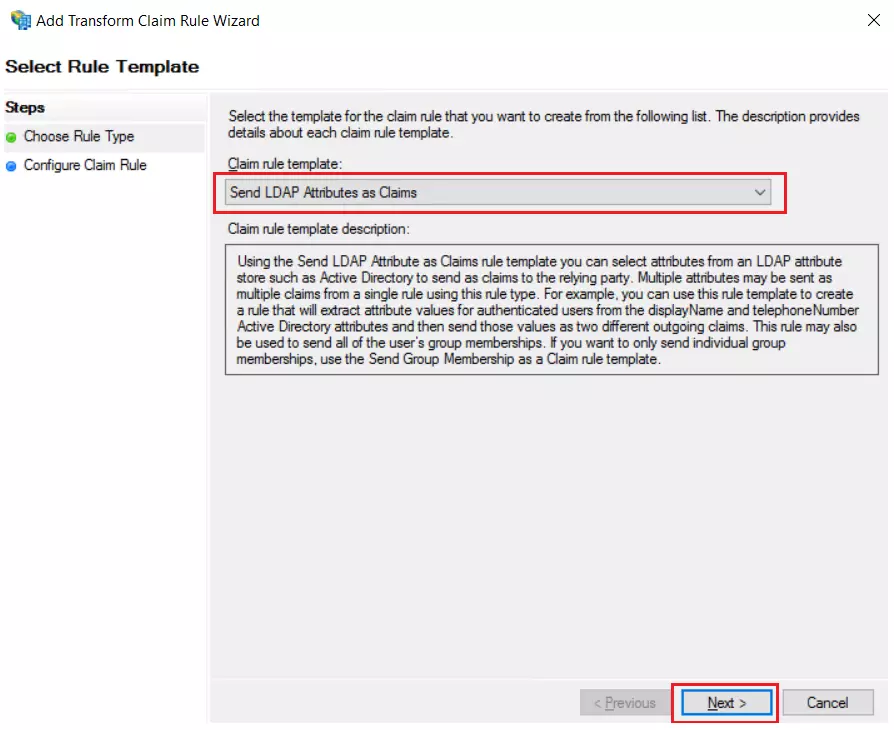
 Configure Claim Rule
Configure Claim Rule
- Add a Claim Rule Name and select the Attribute Store as required from the dropdown.
- Under Mapping of LDAP Attributes to outgoing claim types, Select LDAP Attribute as E-Mail-Addresses and Outgoing Claim Type as Name ID.
- Once you have configured the attributes, click on Finish.
- After configuring ADFS as IDP, you will need the Federation Metadata to configure your Service Provider.
-
To get the ADFS Federation Metadata, you can use this URL
https://< ADFS_Server_Name >/federationmetadata/2007-06/federationmetadata.xml - You have successfully configured ADFS as SAML IdP (Identity Provider) for achieving ADFS Single Sign-On (SSO) Login
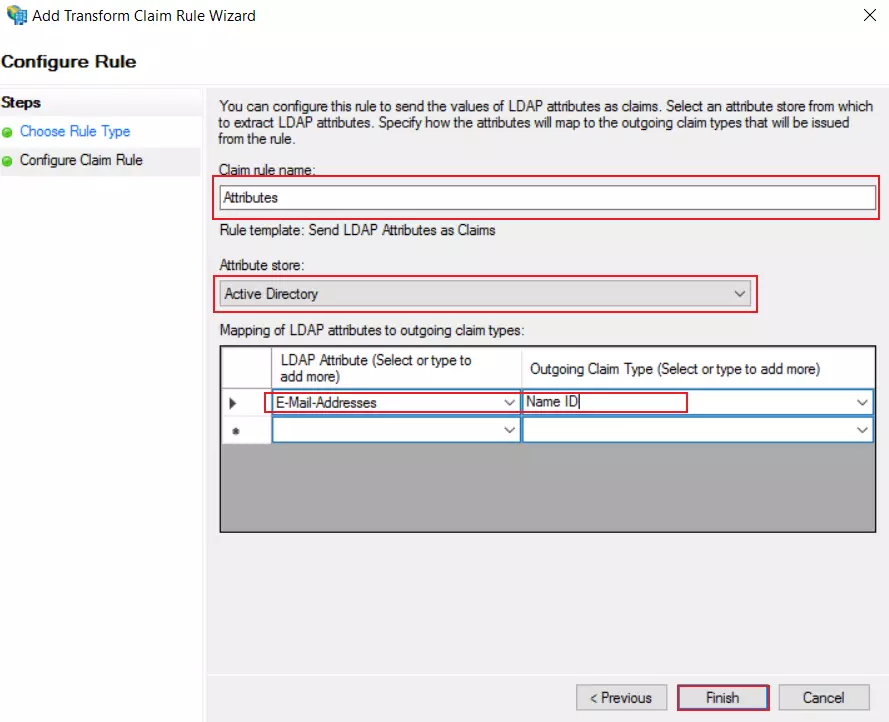
Windows SSO (Optional)
Follow the steps below to configure Windows SSO
 Steps to configure ADFS for Windows Authentication
Steps to configure ADFS for Windows Authentication
- Open elevated Command Prompt on the ADFS Server and execute the following command on it:
-
 setspn -a HTTP/##ADFS Server FQDN## ##Domain Service Account##
setspn -a HTTP/##ADFS Server FQDN## ##Domain Service Account##
-
 FQDN is Fully Qualified Domain Name (Example : adfs4.example.com)
FQDN is Fully Qualified Domain Name (Example : adfs4.example.com)
-
 Domain Service Account is the username of the account in AD.
Domain Service Account is the username of the account in AD.
-
 Example : setspn -a HTTP/adfs.example.com username/domain
Example : setspn -a HTTP/adfs.example.com username/domain
- Open AD FS Management Console, click on Services and go to the Authentication Methods section. On the right, click on Edit Primary Authentication Methods. Check Windows Authentication in Intranet zone.
- Open Internet Explorer. Navigate to Security tab in Internet Options.
- Add the FQDN of AD FS to the list of sites in Local Intranet and restart the browser.
- Select Custom Level for the Security Zone. In the list of options, select Automatic Logon only in Intranet Zone.
- Open the powershell and execute following two commands to enable windows authentication in Chrome browser.
- You have successfully configured ADFS for Windows Authentication.
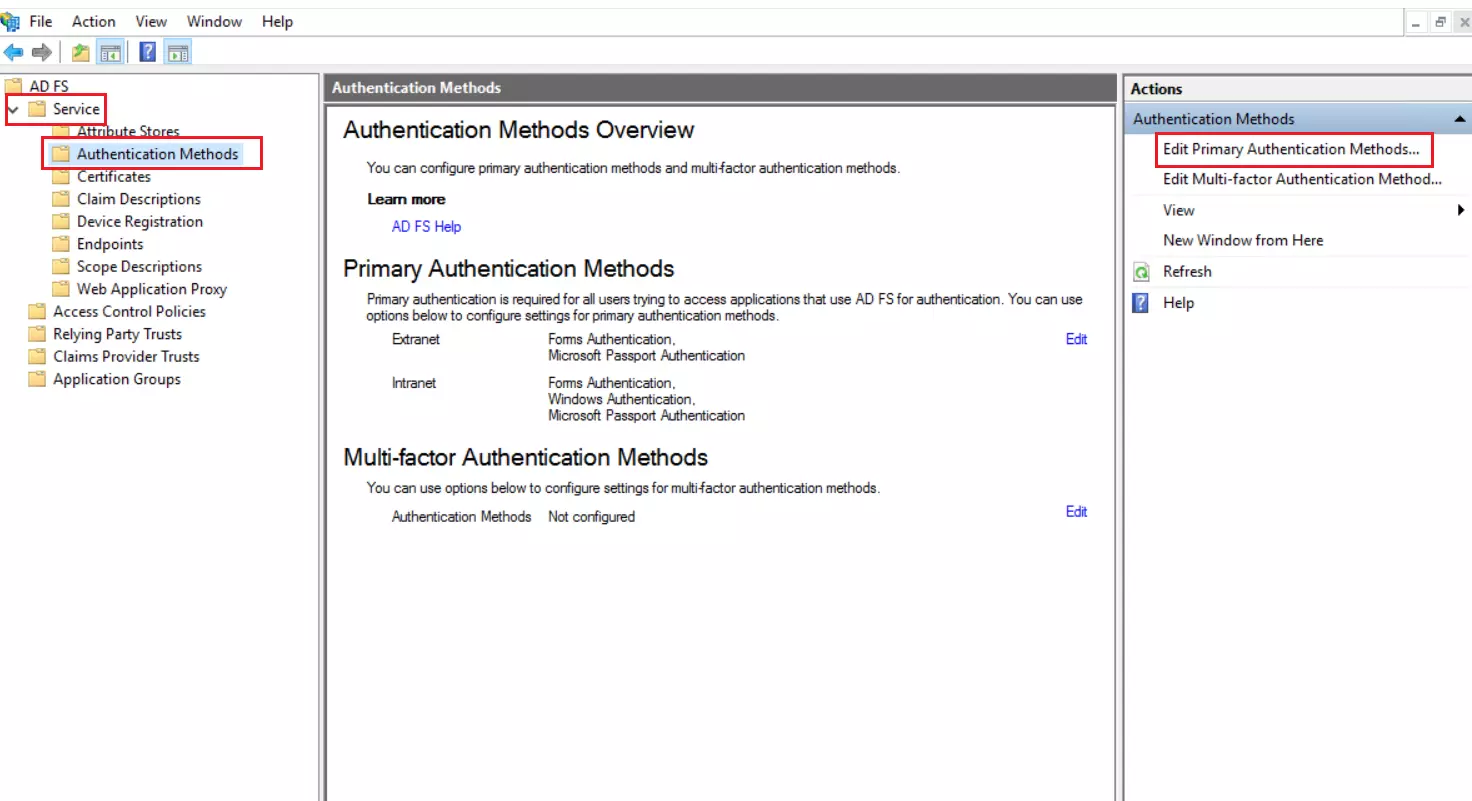
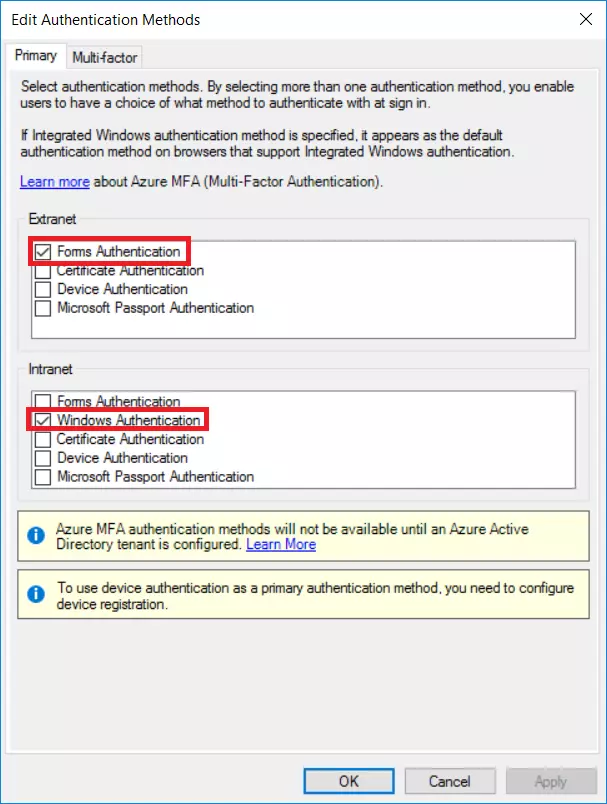
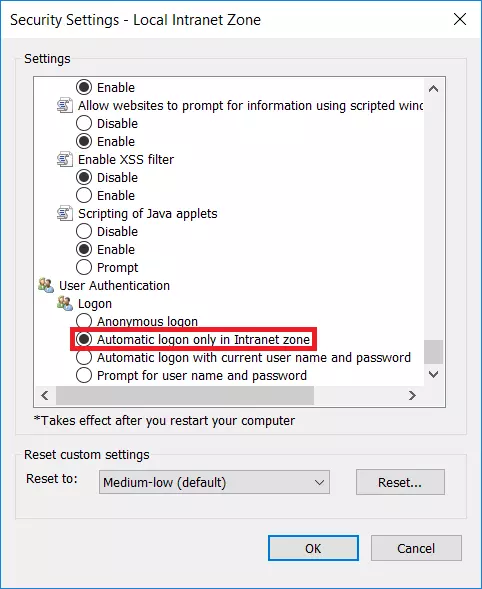
Set-AdfsProperties -WIASupportedUserAgents ((Get-ADFSProperties | Select -ExpandProperty WIASupportedUserAgents) + "Chrome")
Get-AdfsProperties | Select -ExpandProperty WIASupportedUserAgents;
3. Configure DotNetNuke SAML Authentication Provider as Service Provider
- For configuring application in the authentication provider, click on the Add new IdP button in the Identity Provider Settings tab.
- After configuring your Identity Provider, it will provide you with IDP Entity ID, IDP Single Sign On URL and x.509 Certificate. Configure these values under IDP Entity ID, Single Sign-On Url and SAML X509 Certificate fields respectively. (Refer to the Metadata provided by Identity Provider)
- Click Update to Save your IDP details.
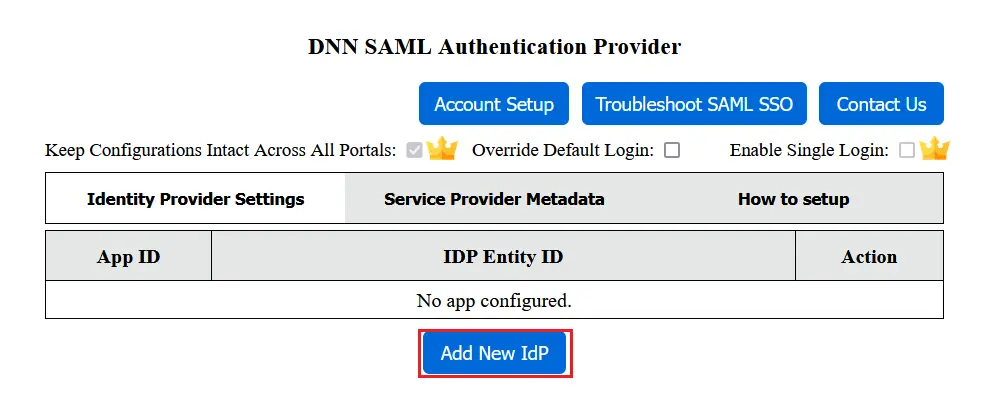

4. Testing SAML SSO
- Click the Test Configuration button to verify if you have configured the plugin correctly.
- On successful configuration, you will get Attribute Name and Attribute Values in the Test Configuration window.

You can even configure the ASP.NET SAML Single Sign-On (SSO) module with any identity provider such as ADFS, Azure AD, Bitium, centrify, G Suite, JBoss Keycloak, Okta, OneLogin, Salesforce, AWS Cognito, OpenAM, Oracle, PingFederate, PingOne, RSA SecureID, Shibboleth-2, Shibboleth-3, SimpleSAML, WSO2 or even with your own custom identity provider. To check other identity providers, click here.
5. Additional Resources
- DNN SAML Single Sign-On (SSO)
- DNN OAuth Single Sign-On (SSO)
- ASP.NET SAML Single Sign-On (SSO)
- nopCommerce SAML Single Sign-On (SSO)
- Umbraco SAML Single Sign-On (SSO)
Need Help?
Not able to find your identity provider? Mail us on dnnsupport@xecurify.com and we'll help you set up SSO with your IDP and for quick guidance (via email/meeting) on your requirement and our team will help you to select the best suitable solution/plan as per your requirement.
Need Help? We are right here!

Thanks for your inquiry.
If you dont hear from us within 24 hours, please feel free to send a follow up email to info@xecurify.com
Cookie Preferences
Cookie Consent
This privacy statement applies to miniorange websites describing how we handle the personal information. When you visit any website, it may store or retrieve the information on your browser, mostly in the form of the cookies. This information might be about you, your preferences or your device and is mostly used to make the site work as you expect it to. The information does not directly identify you, but it can give you a more personalized web experience. Click on the category headings to check how we handle the cookies. For the privacy statement of our solutions you can refer to the privacy policy.
Strictly Necessary Cookies
Always Active
Necessary cookies help make a website fully usable by enabling the basic functions like site navigation, logging in, filling forms, etc. The cookies used for the functionality do not store any personal identifiable information. However, some parts of the website will not work properly without the cookies.
Performance Cookies
Always Active
These cookies only collect aggregated information about the traffic of the website including - visitors, sources, page clicks and views, etc. This allows us to know more about our most and least popular pages along with users' interaction on the actionable elements and hence letting us improve the performance of our website as well as our services.
